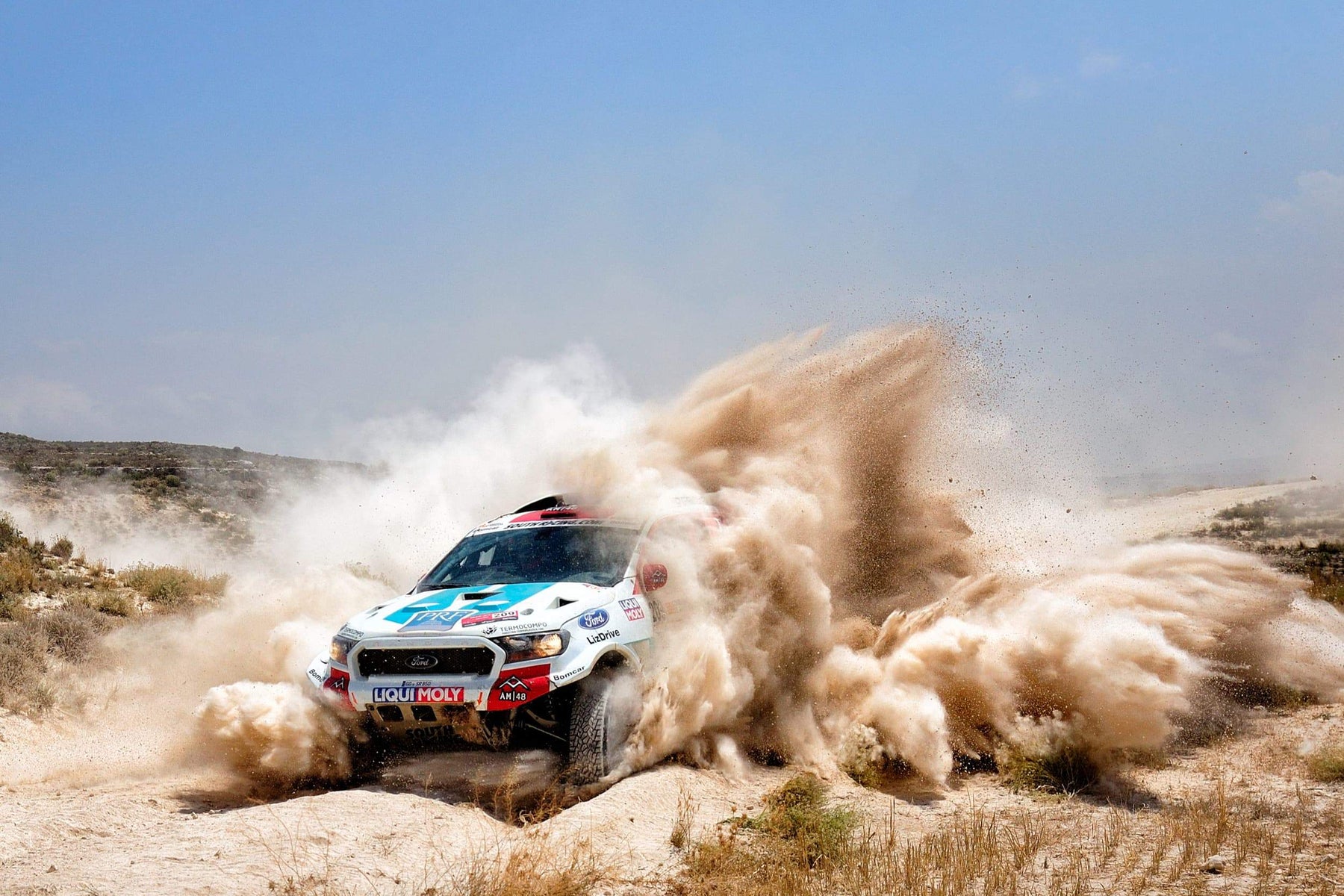The 2019 Dakar Rally: The Ultimate Overland Expedition

Table of Contents
In 1977, French motorcycle racer, Thierry Sabine, got lost in the Libyan desert during the Abidjan-Nice Rally. After returning to France, Sabine became inspired by the challenge and adventure of racing through the deserts of Africa. He created the ultimate overland expedition, and the world-famous Dakar Rally began in 1978.
Sabine described the race as "a challenge for those who go. A dream for those who stay behind."
The World’s Ultimate Overland Expedition
The original Rally was from Paris France to Dakar, Senegal. Drivers of cars, motorbikes, and trucks battled their way through the Sahara Desert -- the largest hot desert in the world and comparable in size to the U.S. The inaugural race was 10,000 km (over 6,200 miles) with 182 vehicles starting and only 74 racers completing the arduous journey.
In 1992, event organizers took the event even further with a special edition race. Competitors began in Paris and raced across the entire African continent to the southern most tip of the Cape. The 1992 race comprised of 22 stages, 10 countries, and 12,427 km (over 7,700 miles)!
In 2008, after increasing security issues and terrorist threats in Mauritania, the event was cancelled the night before the overland expedition began. In 2009, the event organizers moved the famous sporting event to South America.
The 2019 Dakar Rally
Unlike previous years, the 2019 Dakar Rally course is exclusively in Peru. The Dakar is a one-of-kind extreme long-distance off-roading and orienteering competition weaving through some of the most remote and unforgiving terrain.
The race is divided into 10 1-day stages. As racers finish one stage, they are given the route info for the following day's route. Each stage's route is kept secret until the route book is delivered to the competitors.
2019 Course Stats
- 5,000 km (3,100 miles) total length
- Over 3,200 km (2,000 miles) through sand
- 5 vehicle categories: motorcycles, cars, quads, trucks, and Side by Side (SxS)
- New UTV lightweight-car classification
The 2019 course make the most of the open Peruvian desert by featuring 2 mass starts -- one at stage 5 then for stage 9. This year's overland expedition will also offer a "second chance" to racers who get bumped out within the first part of the rally will be allowed to rejoin the race (in a parallel competition) after the rest day.
2019 Participant Stats
- 334 vehicles competing
- 167 motorbikes + quads
- 126 cars + SxS
- 41 trucks
- 534 drivers and co-pilots
- 17 women competitors (the most since 2009)
- 2 all-women teams
- 61 nationalities represented
- One 16-year-old mechanic (the youngest competitor in Dakar history)
This year, spectators can get the full Dakar experience for FREE with at the Feria Dakar Lima. This special event will include meet and greets with the "Heroes of the Dakar," a parade of vehicles, freestyle motorbike shows, concerts, a race museum, the official race store, and stands at the giant podium for the starting ceremony -- just to name a few of the entertainment options.
Safety for the Environment, Competitors, and Spectators
The rally is described as one of the most dangerous endurance events in the global sporting community. During its 40 years, the race has claimed 70 lives of competitors and spectators alike. With the inherent risk of the race, 9,000 police officers and national security forces will be utilized to keep spectators and competitors safe.
For Competitors
Due to the remoteness and nature of the overland expedition, the organizers utilize a 35-person team to monitor all vehicles 24/7. Each vehicle is equipped with sophisticated satellite tracking beacons. Race organizers also host a 60-person medical team equipped with helicopters, a field hospital, and vehicles equipped for medical treatments on the course.
Any non-compliance with race or local regulations will be met with penalties, disqualification, or fines.
For Spectators
To accommodate the 4 million spectators, the rally has 30 secure spectator areas. These viewing zones are protected and supervised to ensure spectators can watch the race safely. Leading up to the event, race organizers and the Peruvian Automobile Club will launch a massive media campaign to educate the public and share safety tips.
For the Environment
Routes are collaborated on by race officials and the local authorities of the participating countries to ensure the Dakar Rally is an Eco-Responsible event. The Rally supports the protection of the environment and cultural heritage of the countries hosting the race -- there are even exclusion areas that are protected by remaining completely off-limits to traffic and spectators.
The Rally organizes waste and recycling collection from camping and spectator areas. During the event, over 100 tons of waste will be collected! Each bivouac (camping area) will have a "Green Point" to safely dispose of hazardous waste like oil and filters. The Race has partnered with Peruvian water brand, Glacial, to collect and recycle all the discarded water bottles.
The Dakar takes it's conservation efforts even further by offsetting it's carbon footprint through support of 2 conservation projects. They financially support the protection of 100,000 hectares of the Amazon Rainforest through the Greenoxx. This region of the Peruvian rainforest is one of the biologically diverse regions in the World! The Rally also support CIMA - Cordillera Azul -- a non-profit dedicated to the conservation, study, and management of the Cordillera Azul National Park.
Event organizers are environmentally conscious long before and after the race. Since 2017, the race has installed over 300 reference points and 70 permanent information signs to increase awareness of significant and sensitive natural areas. The race has also participated in palaeontological and archaeological digs in the Peruvian desert. Since 2017, over 60 specimens have been discovered and preserved.
This ultimate overlanding expedition has made it their goal to "reduce impact, not the speed."
Want more overlanding expeditions? Head over to Facebook and check Midland's new Overlanding USA group to connect with other overlanders from coast to coast.


